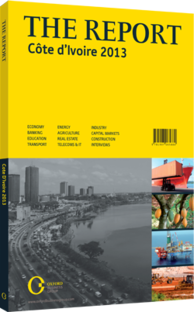Creatio ex nihilo: The establishment of Yamoussoukro as the country’s capital brought with it some toothy new residents
Creating a new capital city ex nihilo is not as unusual as it might sound. Throughout history, kings, emperors, presidents and generals established their seats of power in any number of relatively uninhabited (or uninhabitable) places – out of marshland in the case of Washington DC, or a damp fishing village in the case of Tokyo. But in recent decades, it appears to have become something of a trend.
There was Oscar Niemeyer’s futuristic utopia of Brasilia, built in the late 1950s as a fully planned city in the middle of the Brazilian highlands. In 1991 Kenzo Tange’s master-planned Abuja rose in the middle of the Nigerian bush, all leafy neighbourhoods and wide boulevards, and a sharp contrast to the fervour of the former capital, Lagos.
CAPITAL GAINS: Perhaps one of the more prominent examples, however, is Yamoussoukro, the birthplace of former President Félix Houphouët-Boigny. When it was designated as Côte d’Ivoire’s official political and administrative capital in 1983, Yamoussoukro had, at 15,000, a population of nearly 4m less than the previous capital, Abidjan. This marked a significant change in scenery for the capital city of one of Africa’s most dynamic countries. As travel writer VS Naipaul once stated, “It used to be a village… where grass huts perish after two years.”
While the establishment of the new capital was ambitious enough, it was followed by a chain of projects that matched the outsized confidence of the “Grand Old Man of Africa”. Among the grands enormous five-star hotels, a new airport and what would eventually be the largest church in the world, the Basilica of Our Lady Peace, which now stands taller than St Peter’s Basilica in the Vatican. However, among the most grandiose of Houphouët-Boigny’s ambitions for the new city was the presidential palace, a contemporary construction that is noteworthy in and of itself, but is most memorable perhaps for its toothy security guards: crocodiles.
HERE BE MONSTERS: The crocodiles that inhabit the artificial lake bordering the presidential palace have taken on a significance of almost mythic proportions in the country, with nearly every citizen able to recant a tale – perhaps apocryphal, perhaps not – relating to the crocodiles’ insatiable appetite. According to one unpleasant rumour, the president regularly fed albinos to his reptilian guardians.
Crocodiles were relatively uncommon in Yamoussoukro until Houphouët-Boigny placed them in the water surrounding his abode, and in the 30 years since, their legends have become imbued with near sacred reverence – as Naipaul put it, they are considered “totemic, emblematic creatures”.
Taking care of the large prehistoric reptiles – and the carnivorous turtles which also eventually took up residence in the lake – was seemingly a mundane task, carried out with only a fraction of ceremony. Every day, for more than three decades, at five o’clock in the afternoon a caretaker known as Old Dicko would come to the lake to throw meat slurry to the more-than-a-dozen crocodiles.
All of the beasts have nicknames of their own, such as Capitaine or Chef de Cabinet. Needless to say, the feedings became something of an event for both locals and visitors, and occasionally, for a small fee, a live chicken or two would be tossed in to provide a bit more spectacle for the crowd.
Old Dicko became as much an attraction as the crocodiles, often posing for photos, and he would occasionally deliver an admonitory rap with his machete to the more impudent reptiles.
A SAD END: Unfortunately, it came to an abrupt conclusion one day in 2012, when Old Dicko turned to whack one of the crocodiles who had snapped at his robe. He lost his balance as he did so, and the animal moved in for the kill. The ending came as a lamentable surprise to many who had come to view “Le Vieux Dicko” to be as much of a fixture of Yamoussoukro as the city’s grand hotels and boulevards.
You have reached the limit of premium articles you can view for free.
Choose from the options below to purchase print or digital editions of our Reports. You can also purchase a website subscription giving you unlimited access to all of our Reports online for 12 months.
If you have already purchased this Report or have a website subscription, please login to continue.

